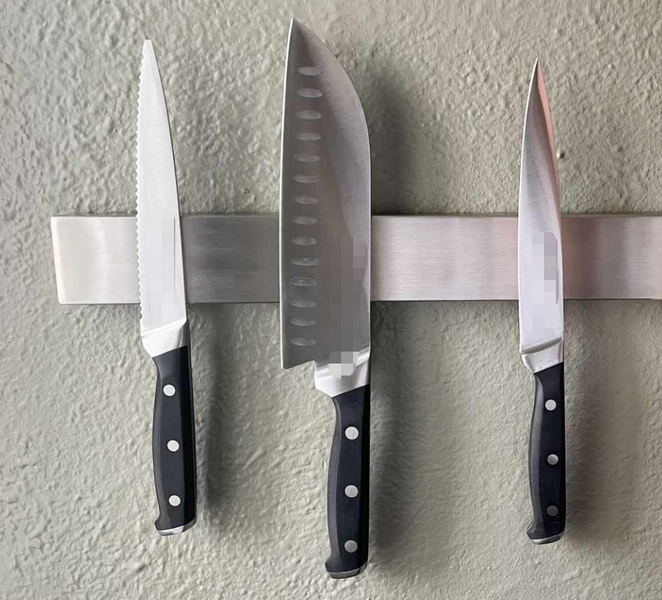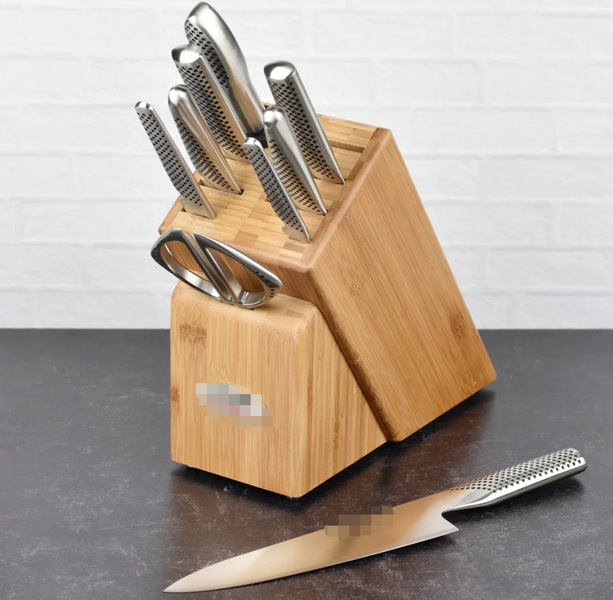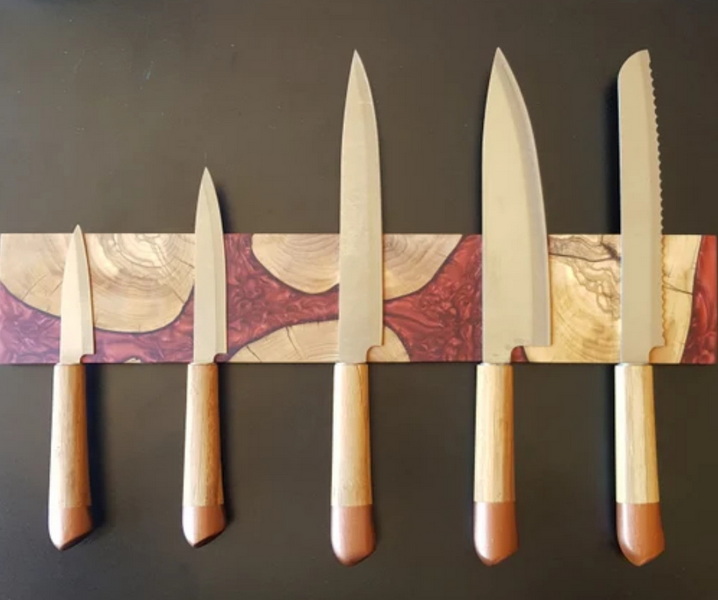- All
- Product Name
- Product Keyword
- Product Model
- Product Summary
- Product Description
- Multi Field Search
Views: 222 Author: Ann Publish Time: 2025-10-27 Origin: Site











Content Menu
● Why Paring Knife Design Matters in Safety
● Before You Use: Inspection and Preparation
● Storage Solutions for Paring Knives
● Specialized Scenarios in Professional Kitchens
● Training and Safety Protocols
● FAQ
>> What is the best way to store paring knives to prevent dulling?
>> Can paring knives be dishwasher-safe?
>> How often should paring knives be sharpened?
>> What is pinch grip and why is it recommended?
>> Are there safety features to look for in paring knife handles?
The paring knife is one of the most versatile tools in any kitchen, prized for its precision and maneuverability. Proper storage and handling not only extend the knife's life but also protect users from accidental cuts. This comprehensive guide provides expanded best practices for selecting, storing, maintaining, and safely using a paring knife in both professional and home environments. It integrates practical recommendations, safety tips, and workflow considerations tailored for OEM brands targeting international markets.

A well-designed Paring Knife balances weight, balance, and blade geometry to minimize slips and maximize control. Several design features impact safety:
- Full tang and robust spine geometry provide stable handling and reduce the chance of blade-wrist failure during precise cuts.
- Edge geometry and grind type influence bite, control, and predictability during delicate tasks such as peeling or deveining.
- Non-slip, moisture-resistant handle materials improve grip security in wet environments.
- Edge retention and corrosion resistance extend service life in high-humidity kitchens or coastal regions.
- Optional safety features, such as protective sheaths or integrated blade guards, enhance transport safety and reduce accidental contact.
For brands providing OEM services, prioritizing safety-forward design traits helps reduce end-user injuries, boosts user confidence, and supports compliance with international safety norms.
1. Visually inspect the blade for chips, cracks, or rounding of the tip, and verify rivets are secure if the knife has a traditional handle.
2. Assess edge condition: a sharp edge is safer and more controllable than a dull edge, which may require excessive force.
3. Confirm the sheath, clip, or storage sleeve fits securely and does not conceal sharp edges.
4. Ensure packaging and safety notices are multilingual and align with the target market's regulations.
5. Calibrate expectations for use: identify the typical tasks the paring knife will perform (peeling, trimming, segmenting) and tailor maintenance guidance accordingly.
- Grip: Use a pinch grip, placing the thumb and index finger on opposite sides of the blade's spine just above the bolster, with the remaining fingers wrapping around the handle for control.
- Cutting motion: Favor controlled, deliberate slices rather than sawing. Keep fingertips of the guiding hand curled inward to avoid contact with the blade.
- Surface choice: Use a stable, non-slip cutting board. Avoid placing knives on unstable surfaces, which can cause slips or torsion on the blade.
- Transfer: When handing a knife to another person, offer the handle first and maintain a firm grip until the recipient takes hold.
- Cleaning: Do not submerge a blade fully in standing water if the handle lacks corrosion resistance; wash promptly and dry thoroughly.
- Ergonomics and fatigue: For longer tasks, switch between paring knife tasks and other tasks to reduce repetitive strain.
- Multi-task workflow: In professional kitchens, assign specific paring knives to designated prep areas to minimize cross-contamination and improve efficiency.
Safe storage reduces both personal risk and blade damage. Choose storage solutions based on usage context, environment, and handling practices:
- Knife blocks with slits designed to cradle the blade without dulling edges.
- Magnetic knife strips mounted at a recommended height to prevent accidental contact and ensure quick access.
- Drawer organizers with soft, molded slots to keep blades separate and protected.
- Protective sheaths or blade guards for transport, travel, or crowded tool storage in professional kitchens.
- Case or roll systems for OEM distributors, enabling secure transport during trade shows or client deliveries.

- Washing: Hand wash with warm water and mild detergent. Avoid abrasive pads that can scratch the blade. Verify dishwasher suitability with the manufacturer's guidelines; some OEM knives are not dishwasher-safe due to handle or blade material constraints.
- Drying: Wipe dry immediately after washing to prevent corrosion, particularly for carbon steel and some Damascus blades.
- Sharpening: Regular maintenance extends edge life. Use appropriate sharpening stones or professional sharpening services tuned to blade steel and edge geometry.
- Rust prevention: Lightly oil the blade with food-grade mineral oil if recommended for carbon steel or other susceptible finishes; follow manufacturer guidance.
- Storage after maintenance: Confirm the blade is completely dry before returning to storage to prevent moisture-induced corrosion.
- Delicate finishes: For high-end Damascus or polished blades, use non-abrasive cleaners and gentle drying methods to preserve pattern integrity.
- High-volume prep areas: Implement color-coded paring knives to minimize cross-contamination and speed up the workflow.
- Descaling or acidic prep tasks: Depending on the steel and coating, plan for more frequent maintenance when handling highly acidic ingredients to prevent corrosion or pitting.
- Knife rotation: Rotate blades to balance wear and extend service life across multiple knives.
- Transportation between stations: Use secured cases, sleeves, or magnetic strips for safe transit; never leave knives exposed.
- Emergency maintenance: In case of a nick or crack during service, have a quick-access repair kit and a protocol to replace the damaged blade promptly.
- Onboarding: Provide hands-on demonstrations of correct grip, precise cutting technique, safe passing, and storage.
- Signage: Place clear safety reminders near workstations and in storage areas.
- SOPs: Develop region-specific standard operating procedures covering cleaning, sharpening, and storage, aligned with local regulations and best practices.
- OEM considerations: Include safety-focused packaging and multilingual safety notes to support global markets; ensure labeling complies with regional consumer safety standards.
- Continuous improvement: Regularly solicit feedback from end-users through surveys and on-site testing to refine blade geometry and handle ergonomics.
A well-managed approach to storing and handling your paring knife enhances safety, longevity, and performance. By selecting safe, ergonomic designs, maintaining sharp edges, employing proper storage, and delivering clear, multilingual safety training, brands can help end users work confidently and efficiently. The paring knife remains an essential tool in any kitchen ecosystem, and adopting these best practices supports both professional chefs and home cooks alike.

Store in dedicated slots or sheaths that protect the blade edge and keep blades dry, avoiding loose drawer storage that can cause contact and dulling.
It depends on blade steel and handle construction. Always follow the manufacturer's guidance for your specific model and identify any warranty implications.
Frequency depends on usage and task intensity. In professional kitchens, professional sharpening cycles are common for high-performance blades.
The pinch grip places pressure on the blade's spine near the bolster, giving precise control and reducing slipping risk.
Look for non-slip textures, full tang construction, and corrosion-resistant materials that maintain grip in wet environments.
The Ultimate Professional Knives for Halal Butchery in Middle Eastern Kitchens
Chef Knife Size Guide: Choosing Between 6″, 8″, 10″, And 12″
Custom Knife Handles: How To Design A Chef Knife That Fits Your Hand Perfectly
Chef Knife Surface Treatments Guide: From Polished Migaki To Damascus Patterns
Inside Our Professional Knife Sample Room: Quality You Can See
Universal Knife Block Buying Guide: Modern Acrylic & ABS Knife Holders for Professional Kitchens
Universal Knife Block: The Complete Guide To Modern, Hygienic Knife Storage
The Complete Guide To Red Handle Knife Sets: Style Meets Functionality in The Kitchen
Professional Knives for Halal Butchery And Middle Eastern Cuisine